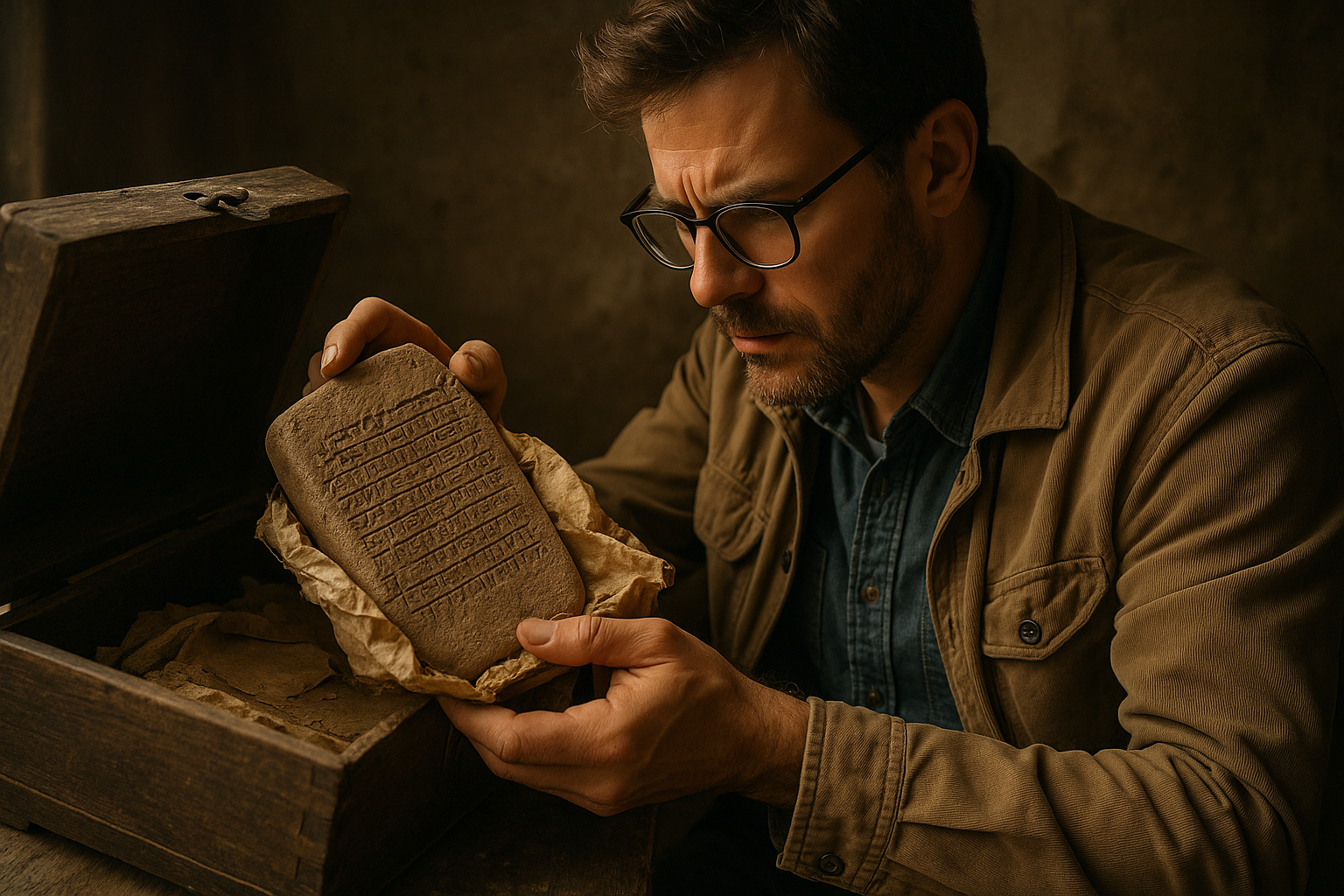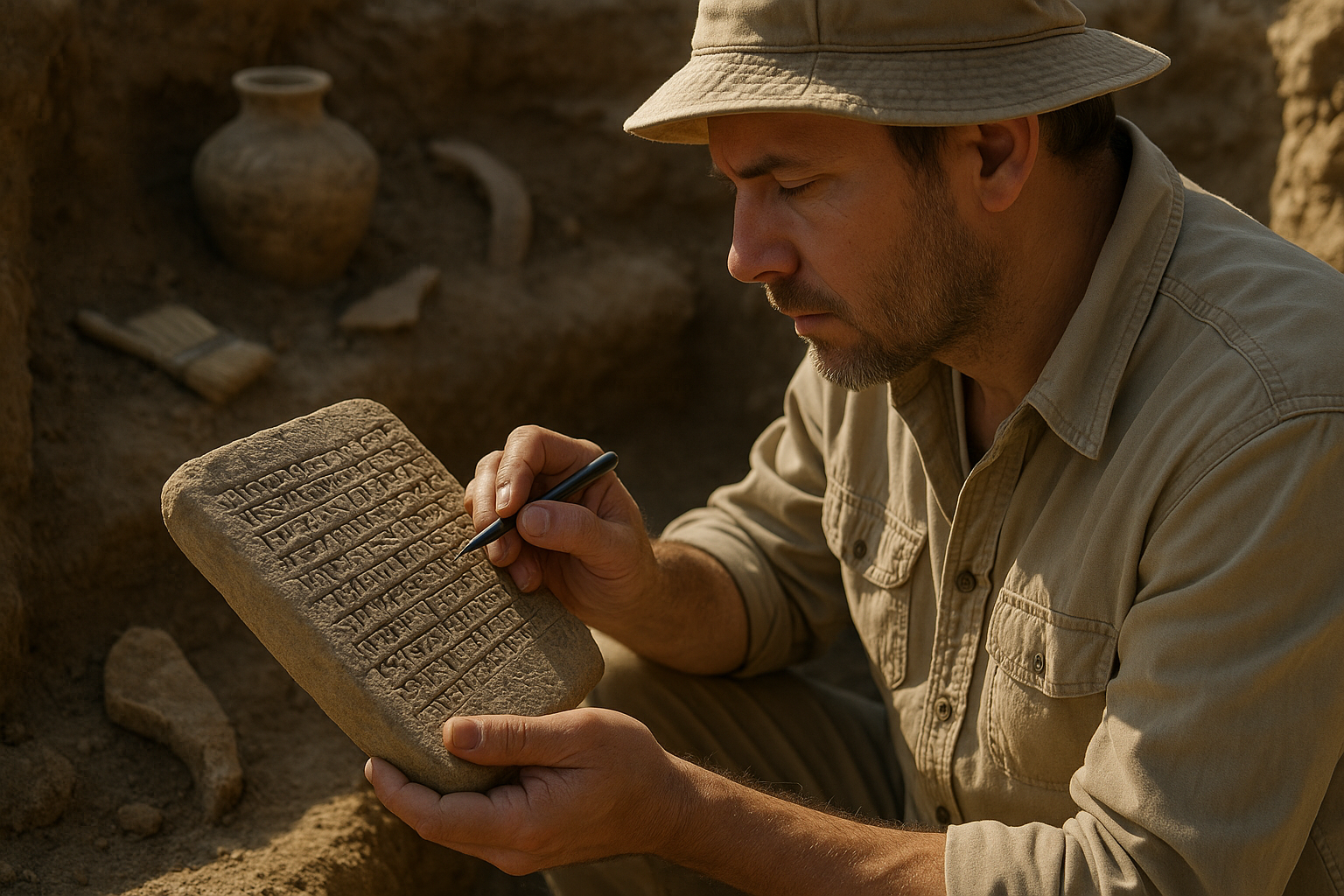Ancient texts hold secrets that transcend time, whispering wisdom from civilizations long vanished. These forgotten manuscripts reveal prophecies that continue to captivate modern seekers.
🔮 The Allure of Lost Prophetic Texts
Throughout human history, prophetic writings have shaped civilizations, guided rulers, and offered glimpses into humanity’s potential futures. Yet many of these ancient prophecies remain hidden in dusty archives, encrypted in languages few can decipher, or lost to the ravages of time. The rediscovery of these forgotten books represents one of archaeology’s most thrilling frontiers, where ancient wisdom meets modern curiosity.
Scholars and enthusiasts alike are increasingly drawn to these mysterious texts, recognizing that ancient prophecies offer more than mere fortune-telling. They provide windows into how our ancestors understood the cosmos, interpreted natural phenomena, and conceived of time itself. From the Sibylline Oracles of Rome to the enigmatic Dead Sea Scrolls, these documents challenge our understanding of ancient civilizations and their sophisticated worldviews.
The Hidden Libraries of Antiquity
The ancient world possessed repositories of knowledge that rivaled modern libraries in their scope and significance. The Library of Alexandria, though the most famous, was merely one among many centers of learning where prophetic texts were carefully preserved and studied.
Archaeological discoveries continue to unearth fragments of these lost collections. In the caves of Qumran, shepherds stumbled upon clay jars containing scrolls that had remained untouched for two millennia. These Dead Sea Scrolls included previously unknown apocalyptic texts and prophetic writings that transformed our understanding of Second Temple Judaism and early Christianity.
The Nag Hammadi Discovery
In 1945, Egyptian farmers near the town of Nag Hammadi unearthed a sealed jar containing thirteen leather-bound codices. These Gnostic texts, including the Gospel of Thomas and the Apocalypse of Peter, contained prophetic visions and esoteric wisdom that had been deliberately hidden or suppressed. The discovery revealed alternative Christian traditions and prophetic interpretations that mainstream churches had attempted to erase from history.
These codices demonstrated that early Christianity was far more diverse in its prophetic traditions than previously understood. The texts contained cosmological prophecies, spiritual revelations, and predictions about the nature of reality that differed significantly from canonical scripture.
Decoding Ancient Prophecies Through Modern Technology 💻
The digital age has revolutionized how researchers access and interpret ancient prophetic texts. Advanced imaging techniques can now reveal writing on damaged or seemingly blank papyri. Multispectral imaging, for instance, has uncovered hidden layers of text on palimpsests—manuscripts where earlier writing was scraped away to reuse expensive parchment.
Artificial intelligence and machine learning algorithms are being trained to recognize ancient scripts and even predict missing portions of damaged texts. These technologies have accelerated the translation process exponentially, allowing scholars to process manuscripts that might have taken decades to decipher using traditional methods alone.
The Role of Digital Humanities
Digital humanities projects have created vast databases of ancient texts, making prophetic writings accessible to researchers worldwide. Projects like the Digital Dead Sea Scrolls and the Homer Multitext initiative demonstrate how technology democratizes access to ancient wisdom. Scholars from different continents can now collaborate in real-time on deciphering obscure prophecies and comparing textual variants.
This technological revolution extends to preservation as well. High-resolution scanning ensures that even if physical manuscripts deteriorate, their contents survive digitally for future generations to study and reinterpret.
Forgotten Prophetic Traditions Across Cultures 🌍
While Western scholarship has traditionally focused on Greco-Roman and Judeo-Christian prophetic texts, countless other cultures developed sophisticated prophetic traditions that deserve recognition and study.
Mesopotamian Divination Texts
The cuneiform tablets of ancient Mesopotamia contained extensive collections of omens and prophecies. These texts, particularly the Enuma Anu Enlil series, recorded celestial observations and their prophetic interpretations over centuries. Babylonian astronomers-priests believed that celestial phenomena directly influenced earthly events, and their detailed records formed the foundation for Western astrology.
Recent translations reveal that Mesopotamian prophecies were remarkably specific, addressing everything from political upheavals to agricultural predictions. The sophistication of their astronomical observations, combined with their interpretive frameworks, demonstrates a complex understanding of cyclic time and cosmic influence.
Mesoamerican Prophetic Codices
The Maya, Aztec, and other Mesoamerican civilizations created intricate prophetic calendars and codices. Though Spanish conquistadors destroyed most of these texts, surviving fragments like the Dresden Codex reveal sophisticated astronomical calculations intertwined with prophetic cycles.
The famous Maya Long Count calendar, often sensationalized in modern media, actually represents a nuanced understanding of cyclical time and cosmic renewal. Contemporary scholars working with indigenous communities are rediscovering the wisdom encoded in these calendrical systems, which predicted agricultural cycles, astronomical events, and ceremonial timings with remarkable precision.
Asian Prophetic Literature
Chinese prophetic texts like the I Ching (Book of Changes) have influenced philosophical and spiritual thought for millennia. This ancient divination system, based on binary patterns that predate modern computing by thousands of years, offers a sophisticated framework for understanding change and transformation.
India’s vast Puranic literature contains detailed prophecies about world cycles (yugas) and cosmic timescales that stretch across millions of years. These texts describe the characteristics of different ages and the spiritual challenges each presents, offering insights into how ancient Indian philosophers conceptualized history and destiny.
The Sibylline Books: Rome’s Official Prophecies
Ancient Rome consulted a collection of prophetic texts known as the Sibylline Books during times of crisis. According to legend, the Cumaean Sibyl offered nine books of prophecies to the last Roman king, Tarquin the Proud. After he refused to pay her price, she burned three books and offered the remaining six at the same price. When he refused again, she burned three more. Finally, recognizing their value, Tarquin purchased the final three at the original price of nine.
These books were consulted during emergencies throughout Republican Rome, guiding major political and religious decisions. Though the original texts were destroyed in fires, attempts to reconstruct them from later sources continue to fascinate scholars interested in Roman religious practices and prophetic traditions.
Prophetic Texts and Political Power ⚖️
Throughout history, control over prophetic texts often translated directly to political authority. Rulers commissioned prophecies to legitimize their reigns, while rival factions produced counter-prophecies to challenge established power structures.
The Book of Daniel, composed during the Hellenistic period, used prophecy to resist foreign domination and maintain Jewish identity under Greek rule. Its apocalyptic visions provided hope during persecution and established patterns that influenced prophetic literature for centuries.
Medieval Europe saw numerous prophetic texts attributed to figures like Merlin, Nostradamus, and various saints. These prophecies were often interpreted—and reinterpreted—to support particular political claims or dynastic aspirations. The flexibility of prophetic language allowed the same text to be cited by opposing sides in religious and political conflicts.
The Hermetic Tradition and Esoteric Prophecies
The Hermetic Corpus, attributed to the legendary Hermes Trismegistus, represents a synthesis of Greek, Egyptian, and Persian wisdom traditions. These texts, rediscovered during the Renaissance, contained prophetic and philosophical teachings that profoundly influenced Western esotericism.
The Emerald Tablet, perhaps the most famous Hermetic text, contains cryptic statements that alchemists and mystics have interpreted as prophetic keys to spiritual and material transformation. Its famous axiom “As above, so below” suggests a correspondence between celestial patterns and earthly events, echoing prophetic traditions across cultures.
Renaissance Rediscovery
When Byzantine scholars brought ancient Greek manuscripts to Italy during the 15th century, among them were Hermetic texts that had been lost to Western Europe for centuries. Figures like Marsilio Ficino translated these works, believing they contained ancient Egyptian wisdom predating even Moses. Though later scholarship dated them to the early Christian era, their influence on Renaissance thought—including prophetic and astrological traditions—cannot be overstated.
Apocalyptic Literature: Visions of Endings and Beginnings 📜
Apocalyptic texts form a distinctive category of prophetic writing, revealing hidden cosmic realities and predicting dramatic transformations. The term “apocalypse” comes from the Greek word meaning “unveiling” or “revelation,” indicating these texts’ purpose: to reveal what is normally concealed.
Jewish apocalyptic literature flourished during periods of persecution and foreign domination. Texts like 1 Enoch, 4 Ezra, and the Apocalypse of Abraham described heavenly journeys, angelic revelations, and visions of coming judgment. These works provided theological frameworks for understanding suffering and maintaining hope in divine justice.
Christian apocalyptic writing, including the canonical Book of Revelation and numerous non-canonical apocalypses, adapted Jewish motifs while introducing distinctively Christian themes. These texts influenced medieval art, theology, and even political movements throughout European history.
Modern Rediscoveries: Recent Archaeological Finds
The 21st century has witnessed remarkable discoveries of ancient prophetic texts. In 2008, scholars announced the discovery of a stone tablet from the first century BCE containing an apocalyptic text that mentions a messiah who would rise after three days. This “Gabriel’s Revelation” stone challenged assumptions about the uniqueness of Christian resurrection beliefs.
Climate change has had an unexpected benefit for archaeology: melting glaciers in mountain regions have revealed artifacts preserved for millennia, including potential text fragments. Similarly, receding waters have exposed archaeological sites that may contain additional prophetic writings.
The Digital Manuscript Revival
Libraries worldwide are digitizing their collections of ancient manuscripts, revealing texts that were previously accessible only to specialized scholars. This democratization of knowledge allows independent researchers, students, and enthusiasts to examine prophetic texts firsthand, leading to fresh interpretations and discoveries.
Crowdsourcing projects invite volunteers to help transcribe and translate ancient texts, dramatically accelerating the pace of discovery. What once required decades of painstaking work by individual scholars can now be accomplished in months through collaborative effort.
Interpreting Ancient Prophecies in Modern Context 🔍
The challenge of interpreting ancient prophecies lies in bridging vast cultural and temporal distances. Modern readers approach these texts with assumptions and frameworks that would be foreign to their original authors and audiences.
Scholars debate whether ancient prophecies should be understood literally, symbolically, or as products of specific historical circumstances. Some prophecies appear to describe events contemporary to their composition, suggesting they served to interpret current events through a prophetic lens rather than predict distant futures.
Others argue that certain prophecies contain genuinely predictive elements, pointing to apparent fulfillments or uncanny correspondences with later events. The interpretation of prophetic texts remains deeply influenced by the interpreter’s own worldview, religious commitments, and methodological assumptions.
The Ethical Dimensions of Prophetic Rediscovery
Rediscovering ancient prophecies raises important ethical questions. Who has the right to interpret these texts? Should scholars prioritize academic objectivity or respect religious communities’ traditional interpretations? How do we balance historical accuracy with contemporary reverence?
Indigenous communities worldwide are reclaiming their prophetic traditions from colonial archives and academic institutions. They argue that Western scholars have often misinterpreted or decontextualized these texts, stripping them of their cultural and spiritual significance. The movement toward collaborative scholarship, where indigenous knowledge-keepers work alongside academics, represents an important shift in how we approach ancient wisdom.
Prophetic Texts and Environmental Awareness 🌱
Interestingly, some researchers are finding ecological wisdom in ancient prophetic texts. Indigenous prophecies often warned of consequences from failing to maintain proper relationships with the natural world—warnings that seem prescient given contemporary environmental crises.
The Hopi prophecies, for instance, describe a choice between two paths: one leading to balance and sustainability, the other to destruction. Similar themes appear in prophecies from diverse cultures, suggesting that ancient peoples recognized the fragility of ecological balance and the consequences of exploitation.
The Future of Ancient Prophetic Studies
As technology advances and more texts are discovered and translated, our understanding of ancient prophetic traditions will continue to evolve. Interdisciplinary approaches combining archaeology, linguistics, anthropology, religious studies, and even data science promise new insights into these fascinating documents.
The next generation of scholars will likely uncover prophecies from cultures whose written traditions remain largely unexplored. As more languages are deciphered and more sites excavated, the diversity and sophistication of ancient prophetic thought will become increasingly apparent.
Virtual reality may soon allow researchers and enthusiasts to “visit” ancient libraries and temples where prophetic texts were housed, experiencing these documents in their original contexts. Such immersive technologies could transform our understanding of how prophecies functioned within ancient societies.

Preserving Wisdom for Future Generations
The rediscovery of forgotten prophetic texts reminds us of both the fragility and resilience of human knowledge. Countless texts have been lost to fire, flood, war, and deliberate destruction. Yet remarkable documents continue to survive, sometimes in the most unexpected places.
Modern preservation efforts ensure that rediscovered texts will be available for future scholars and seekers. Digital archives, climate-controlled storage, and careful conservation work protect these fragile witnesses to ancient wisdom. Organizations worldwide coordinate efforts to catalog, preserve, and make accessible the prophetic literature of antiquity.
The study of ancient prophecies ultimately reveals not just predictions about the future, but profound insights into how humans have always grappled with uncertainty, sought meaning in patterns, and attempted to understand their place in the cosmos. These texts speak to timeless human concerns—justice, fate, divine will, and the nature of time itself—making them perpetually relevant despite their antiquity.
As we continue unveiling these ancient prophecies and rediscovering forgotten books of antiquity, we engage in a dialogue across millennia. We learn that our ancestors were neither primitive nor naïve, but sophisticated thinkers who developed complex frameworks for understanding reality. Their prophetic visions, whether validated by subsequent events or not, represent humanity’s enduring impulse to find meaning, anticipate change, and hope for better futures. In rediscovering these texts, we rediscover aspects of ourselves and gain perspective on our own era’s challenges and possibilities.
Toni Santos is a temporal researcher and symbolic archaeologist specializing in the study of forgotten burial systems, sacred archival practices, and the visual languages embedded in ancient temporal lore. Through an interdisciplinary and artifact-focused lens, Toni investigates how humanity has encoded knowledge, memory, and mystery into the temporal world — across cultures, rituals, and vanished civilizations. His work is grounded in a fascination with time capsules not only as vessels, but as carriers of hidden meaning. From extinct burial ritual practices to mythical codices and secret temporal seals, Toni uncovers the visual and symbolic tools through which cultures preserved their relationship with the temporal unknown. With a background in design semiotics and temporal artifact history, Toni blends visual analysis with archival research to reveal how time capsules were used to shape identity, transmit memory, and encode sacred knowledge. As the creative mind behind eltonxy, Toni curates illustrated chronologies, speculative temporal studies, and symbolic interpretations that revive the deep cultural ties between artifacts, ritual markings, and forgotten messages. His work is a tribute to: The lost temporal wisdom of Forgotten Time Capsule Burial Rituals The guarded archives of Sacred Codices and Forgotten Temporal Archives The mythopoetic presence of Temporal Symbols and Ritual Markings The layered visual language of Vanished Artifacts and Temporal Messages Whether you're a temporal historian, symbolic researcher, or curious gatherer of forgotten chronological wisdom, Toni invites you to explore the hidden roots of time capsule knowledge — one seal, one glyph, one message at a time.




